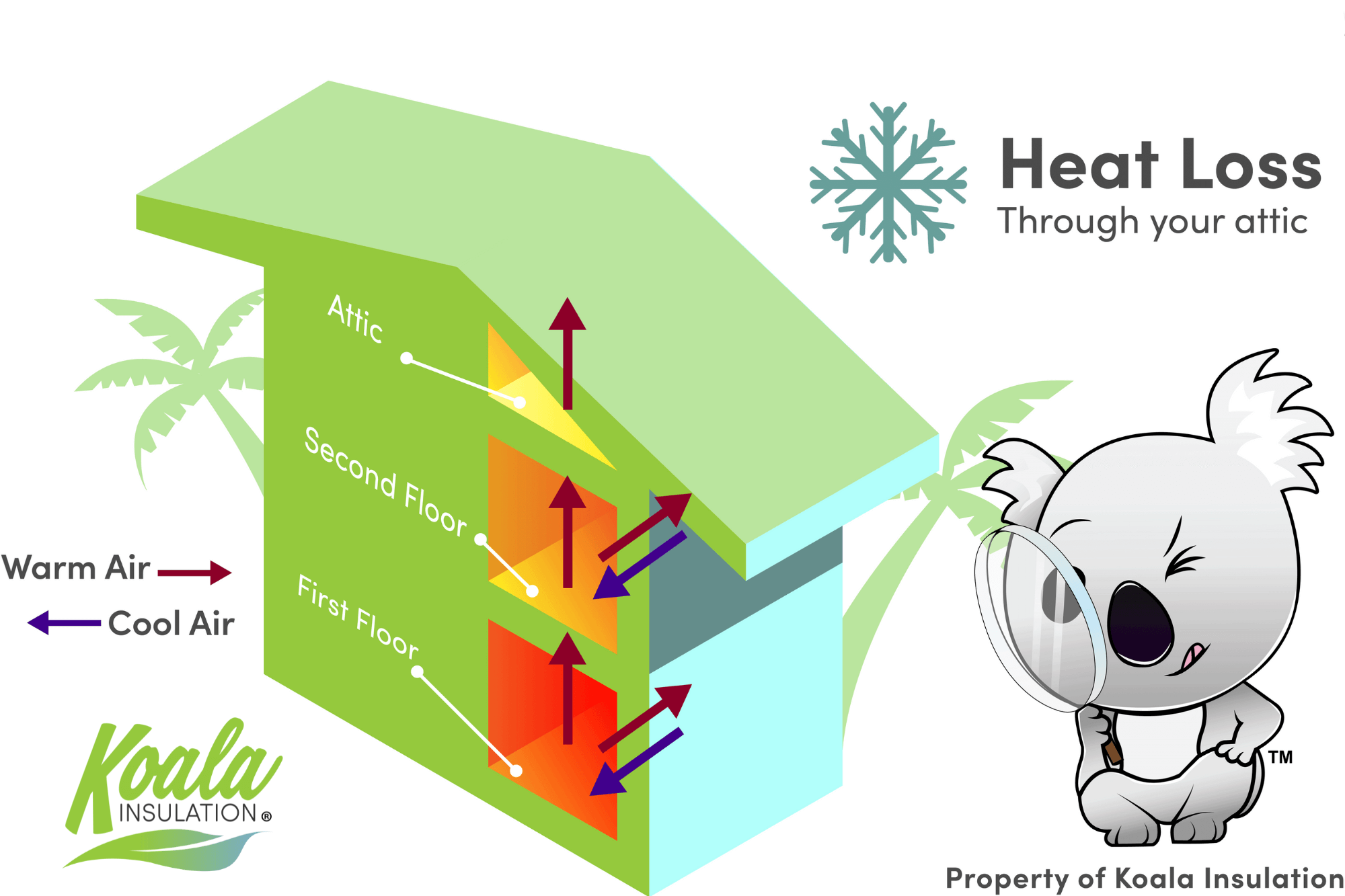What Is the Stack Effect in Insulation?

Maintaining comfort and safety while also considering a cost-effective and energy-efficient solution is crucial to many homeowners. However, according to the Energy Information Administration, about one-third of Americans are struggling to pay their energy bills. While some homeowners attempt to reduce their costs by enduring dangerously high or low temperatures to avoid touching the thermostat, this could drastically affect the health and safety of the household. When it comes to finding ways to lower your monthly costs, it’s important to look at your home’s current condition.
If your HVAC system is having difficulty maintaining the temperature throughout the house, you may have a very simple problem that has an equally simple solution. The stack effect causes problems for every household, but it’s exceedingly challenging in buildings that don’t have properly installed, damaged, or poor coverage of insulation. Without updated insulation and air sealing, you could be letting heat escape your home along with your monthly energy budget.
What is the Stack Effect?
A simple definition of the stack effect is the upward movement of warm air throughout a building. Heat rises, escaping through the ceiling and roof. This is what makes attic insulation so important; the material reduces the loss of heat. Insulation’s primary function is to regulate temperature by reducing the rate of heat transfer, which is the movement of heat in and out of your home.
The stack effect is most prevalent during the winter when you’re attempting to keep the home at a comfortable temperature. If your house is improperly insulated or has deteriorated material, most of the warmth will escape through the attic. The cold air that enters through small cracks and holes throughout your home replaces the heat, putting additional strain on your HVAC system to keep your home at a comfortable temperature.
How Do I Know If My House is Affected?
Unfortunately, many homeowners just continue to raise the temperature on the thermostat, blaming the cold outside. Instead, if you’re noticing high energy bills, difficulty maintaining a controlled climate, and poor indoor air quality, it’s time for a trip to the attic. Prepare beforehand to ensure a safe inspection with the following tools:
- A dust mask, gloves, and safety glasses
- A cap or hard hat for low ceiling and joist risks
- A flashlight or headlamp
- A tape measure
Look for boards to walk on if you need to enter the attic space; many attics don’t have floorboards that will allow you to walk around like any other room in the house. Instead, you could end up falling through the ceiling, so carefully watch your foot placements. Measure the depth of the insulation with the tape measure – if you have batt insulation, the R-value will be printed on the batts. Use our Understanding R-Value article to calculate your home’s insulation levels.
How Insulation Reduces Heat Loss
The R-value, or resistance value, of insulation measures the material’s ability to reduce the rate of heat transfer. A higher value means the insulation is more effective at preventing heat loss. While many insulation types can be considered effective for up to 15 years, many variables affect the deterioration rate of the material. Moisture, pests, and other disturbances can damage the material, decreasing the insulation’s functionality.
Insulation’s R-value will differ depending on the type and material. For example, blown-in cellulose, a common choice to install along your attic floor, has an average R-value of 3.4 per inch. Fiberglass batts, on the other hand, can range from 3.1 to 3.7 per inch. When choosing insulation material to install in your home, it’s important to consider the benefits and differences between each. R-value is just one feature of the material – moisture resistance, fire safety, and even if the material can irritate your skin are all additional factors to take into consideration.
The Importance of Attic Insulation
Insulation can reduce up to 40% of your heating and cooling costs when properly installed and adequately covered throughout your home. Attic insulation is one of, if not the most, important areas to regularly evaluate and update. Not only does it reduce heat loss during the winter as heat attempts to rise up and out of the building but it also keeps heat from entering the home during the summer.
Variables such as your climate zone, weather, and regional regulations can all drastically affect differences between houses. For example, in northern homes, heat transfer outside the home is a more common issue during the winter. In southern climates, heat entering the home during the summer is a bigger problem. Consulting a professional is highly recommended in order to accurately determine your home’s insulation needs based on factors like climate, natural hazards, and more.
Learn More with Your Local Insulation Team
Having a local insulation team evaluate your house can help you improve comfort, safety, and savings. Regularly inspecting your insulation can help you find effective solutions to common discomforts and hazards. Not only does updated insulation and air sealing drastically increase the energy efficiency and climate control of the building, but the material helps reduce monthly energy bills, maintenance needs, and even seasonal health risks.
Koala Insulation is dedicated to helping you and your household understand the impact insulation has on your home. Our technicians are trained and experienced in quickly identifying pain points and assisting you in developing a plan that prioritizes pain points. Koala Insulation’s free evaluations are designed to give you an overview of your home’s current condition so you have the ability to target areas without sacrificing your time and money. Find your local Koala Insulation team and schedule a free evaluation to learn more about how insulation can improve your comfort and safety.
Find Your Location


Get a quote



